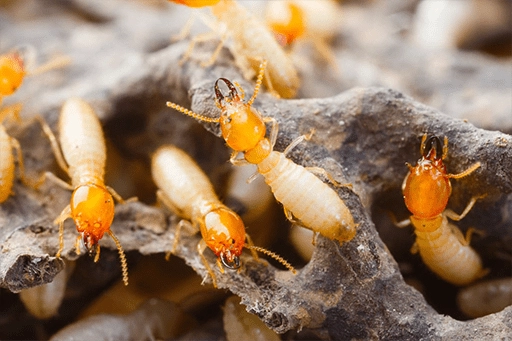Integrated Pest Management
Fungi / Dry Rot
Fungi / Dry Rot
Carpenter Ants and Bees
Carpenter Ants and Bees
Wood Boring Beetles
Wood Boring Beetles
TERMITES
Termites (Isoptera order) feed on wood using protozoa in their digestive system. Like Ants, Termites are social insects with a complex caste of workers who forage, feed and groom other workers, soldiers who defend the colony and reproductives; the queen(s) and the new winged queens and males also called “Alates” who occasionally fly out to start new colonies (swarm) during swarming periods. In Marin and Sonoma we have three types of termites explained below, each living in slightly different environments and with different habits.


DO TERMITES EAT REDWOOD?
SUBTERRANEAN TERMITES
Most common in Sonoma and Marin Counties, the Western Subterranean Termites (Reticulitermes Hesperus) nest and emerge from the ground through cracks and/or voids in the soil and structures. They feed on wood but live in the ground and build mud galleries (aka tubes) to take back the food to the nest and others. We treat the soil with Termidor termiticide along the structure’s perimeter foundation and provide a 5-year warranty. This treatment method has proven to be 100% effective as opposed to bait stations that experience failure.
DRYWOOD TERMITES
More common in Southern California and the Hawaiian Islands, the Western Drywood Termites (Incisitermes Minor) infests and nests directly in wood members. Infestations are more common in southern Marin, often seen on the south side of the structure and not noticeable until pellets appear below infested areas. To eradicate larger infestations we tarp & fumigate the structure with Vikane, Sulfuryl Fluoride and provide a 3 year warranty. Local treatments with Bora-Care, Termidor, TimBor, or orange oil (limited warranty) can be done in areas where infested wood members are accessible for treatment.


DAMPWOOD TERMITES
Mostly found in the forest, Dampwood Termites (Zootermopsis Angusticolis) can only live in a damp to wet wood environment and generally requires no chemical treatment. They rarely infest homes and when they do, they are found near leaks from exterior siding, windows, doors, decks, toilets, showers or other moisture prone areas. They are the largest of all local species and swarm in the fall and are commonly seen flying around exterior lights and windows, often around sunset. Treatment and removing the moisture source to the wood members will stop the infestation, as the insect is unlikely to survive in a dry environment.
stay tuned with updates
[mc4wp_form id=”344″]
